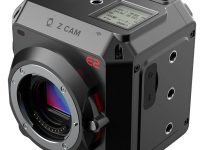Less than two weeks ago, Apple refreshed their MacBook Pros with overhauled internals to match the needs of modern content creators. With the update, the highest-end 15” MacBook Pro is now available with the latest generation Six-Core Intel i9 processor, 32GB of memory, Radeon Pro 560X Graphics, and 4 TB of SSD storage. In addition, Apple has also introduced an updated T2 chip with the system – a supplemental processor that handles background tasks such as drive read/writes, audio, security, and webcam operations.
As expected, the inclusion of such high-end technologies gives the 2018 MacBook Pro a high price tag that costs up to $6,700 for the top-of-the-line configuration. And if you are just like me wondering whether or not this costly system can be justified by its compute performance, acclaimed technology enthusiast Austin Evans has already got some insights on the topic, particularly regarding how fast the machine’s new tech is when compared to an older MacBook Pro 15” (2016), and a similarly priced Lenovo P70 workstation.
In the tests, the 2018 MacBook Pro was equipped with a 2.9GHz 6-Core Intel i9 Processor (Turbo Boost up to 4.8 GHz), 32GB DDR4 Memory, 1TB SSD Storage, and Radeon Pro 560X with 4GB of VRAM.
To start off the comparison, Evans ran several synthetic benchmarks on all systems, beginning with Geekbench 4. Unsurprisingly, the 2018 MacBook Pro 15” performed the best with the highest single-core (5595) and multi-threaded (24765) workload scores.
Meanwhile, the Lenovo P70 fell behind the new MacBook Pro, despite having a more powerful Intel Xeon processor. Of course, the previous generation MacBook Pro 15” had the lowest scores in the test, although it beat out the P70 by less than a thousand points for the multithread scores.
Continuing with testing CPU performance, Cinebench R15 was run on each system. Once again, the 15” MacBook Pro 2018 performed the best for both single (195) and multi-core (974) performance. As with the previous test, the Lenovo P70 was the second fastest, followed by the 2016 MacBook Pro. Based on the two tests, it’s safe to say that when it comes to running processor-intensive tasks, Apple’s 2018 MacBook Pro is more than up to the challenge.
To test the graphics performance, Evans used the Geekbench 4 GPU Compute Test. In this scenario, the Lenovo P70 got the highest score of 79215, large in part to the laptop’s inclusion of a workstation-grade Quadro M4000 graphics card. However, the 15” MacBook Pro 2018 earned a very respectable score of 58561 – higher than its 2016 predecessor which got a score of 49717.
The last synthetic benchmark used was the AJA Disk Speed Test, which as the name suggests is used to test the systems’ SSD read/write performance. The 2018 model produced read and write speeds of 2767 MB/s and 3047 MB/s respectively. These incredible results are clearly attributed to the T2 chip included with the new MacBook Pro, which can efficiently process reading and writing tasks separately from the i9 CPU.
Looking at the 2016 MacBook Pro, the laptop produced read and write speeds of 2070 MB/s and 2302 MB/s. While the drives on the 2016 MacBook Pro are not as fast as its successor, they are indeed much better than the SATA-based SSDs on the Lenovo P70, which showed read and write speeds of just 133 MB/s and 476 MB/s respectively.
While synthetic benchmarks can be used as a means to test computing performance, there is no test as telling as a real-world use case scenario. In this instance, Evans ran DaVinci Resolve 14 on all systems. The Resolve timeline was comprised of RED RAW clips with a resolution of 7K, all color corrected with a bunch of power windows.
The challenge was to see which computer will render a 4K H.264 video the fastest. As expected, the 15” MacBook Pro 2018’s updated internals resulted in render time of 2 minutes and 13 seconds. This meant that Apple’s refreshed computers exported the video over a minute less than the 2016 MacBook Pro and Lenovo P70, which clocked in at around 3 minutes and 30 seconds.
While these tests prove that the new MacBook Pro is definitely a tool ready for video editing, it’s also important to note a significant flaw: its design. While Apple pays great attention to detail with the aesthetics, the compact form factor faces a major issue in regards to cooling the Intel i9 chip. With a sub-optimal airflow system, the MacBook Pro has received controversy on its tendency to thermal throttle as the processor slows down performance due to overheating/insufficient cooling.
So, if you are planning to take the leap with the top-of-the-line model that provides all the bells and whistles and the most computing power, make sure to install the latest macOS High Sierra 10.13.6 patch to troubleshoot the thermal throttling and be able to get the most out of this machine. You can find further details on the topic in Dave Lee’s video below.
All in all, despite the potential issues and the throttling pitfall, there is no denying that the 15” 2018 MacBook Pro is a well-built system with speedy internals. With the latest Intel processor, 32 GB RAM, top-notch graphics, and incomparable read/write speeds, any video editor would be more than pleased to work on this machine. I’d definitely put my money on that.
[source: Austin Evans; Dave Lee]
B&H Order Link:
Apple 15.4″ MacBook Pro with Touch Bar (Mid 2018, Space Gray)
Disclaimer: As an Amazon Associate partner and participant in B&H and Adorama Affiliate programmes, we earn a small comission from each purchase made through the affiliate links listed above at no additional cost to you.



